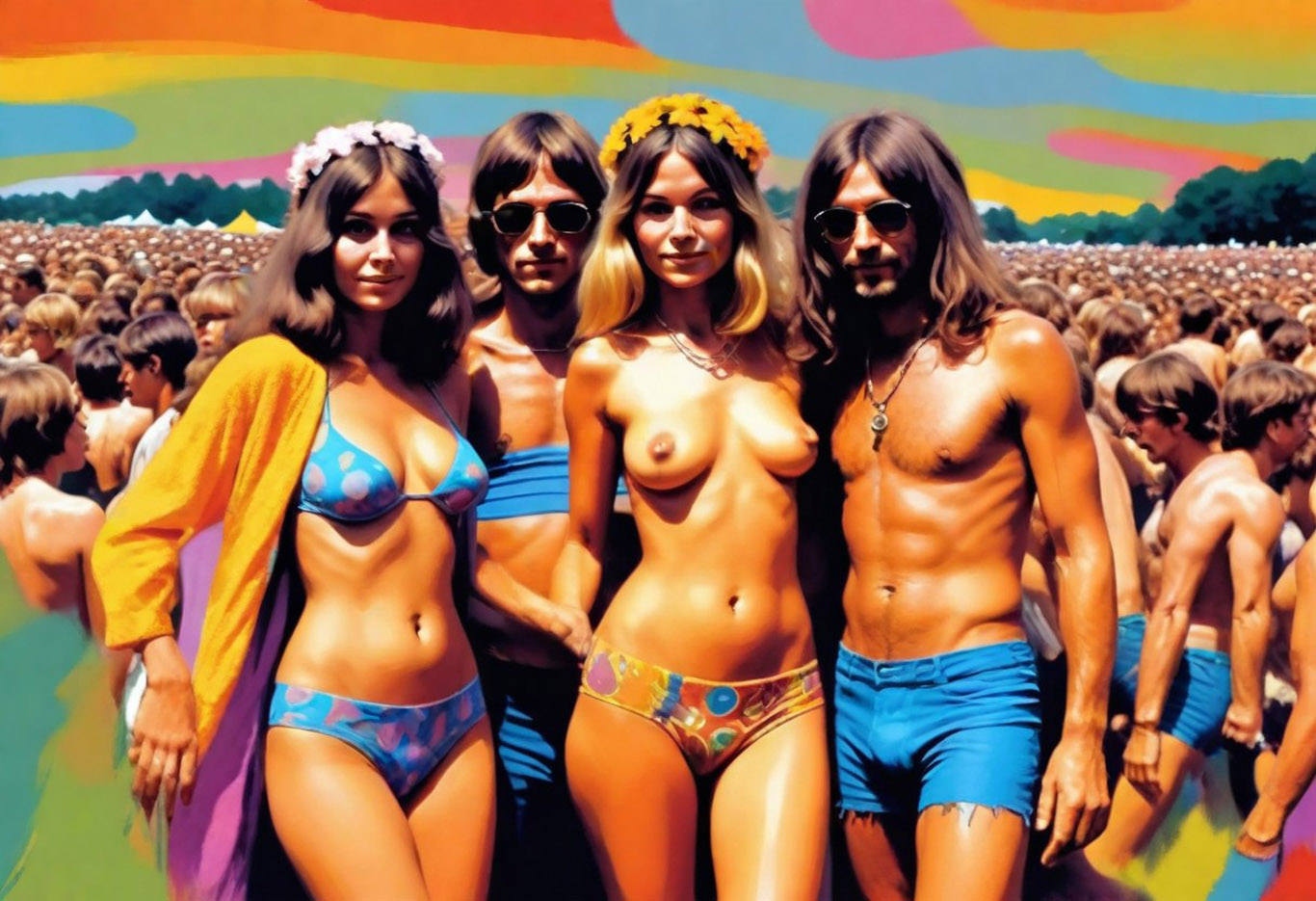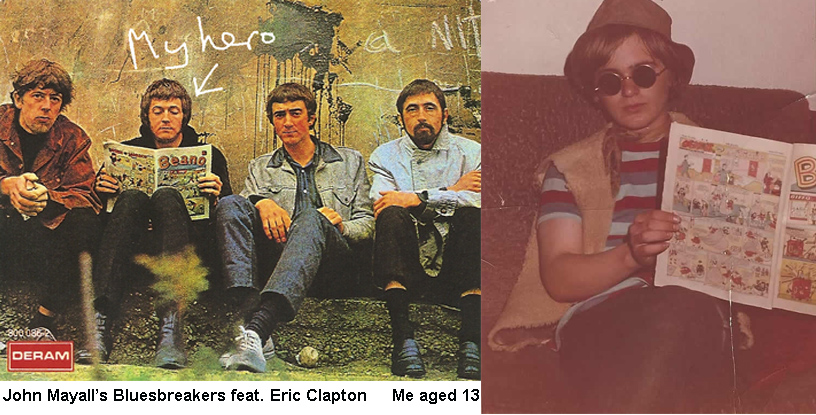Guitar Solos and Lead Guitarists. Part 2: The 1960's




The story of Guitar Solos and lead guitar Part 2: the 1960's
The 1960's were marked, initially, by more of the same (as the 1950's).
As recording technology advanced, we had more sounds, but the songs were still 2 minutes, but recordings now ended with a fade (because they could).
Recorded music split from live music. Artists could release tracks they couldn't reproduce live.
Throughout the 60’s Guitar bands still dominated and, for the first time, they all had to have a lead guitarist in the lineup.
It was an era of social change and increased individualism extended to music too. Artists, for the first time ever, had creative freedom. They could write their own songs.
The Beatles and the Rolling Stones were a couple of many notable exponents who carried on the tradition of integral lead guitar, albeit short and sweet, but let's not dwell there.
The real lead guitar revolution happened with the British Blues boom. Bands like the Yardbirds spawned a new breed of lead guitarist (Jeff Beck, Eric Clapton and Jimmy Page were all in that band at one time) and they weren't content with a sideman role.
Then, it happened…
Clapton invented Guitar Tone!
Clapton broke a new guitar sound that allowed a different style of playing to the previous decade.
On the seminal album John Mayall & The Bluesbreakers with Eric Clapton (1966) he got a sound no one had heard before, a tone in the upper registers that sounded almost like a violin.
Eric Clapton's gear on the Beano album
Eric mostly played a Gibson Les Paul (a light sunburst one dubbed the 'Beano Burst') though it may have been one of several. You can only go by photos of his sessions. Urban legend has it that the 'Beano Burst' was stolen soon after and is now (according to Joe Bonamassa) in a private US collection, nice myth but who knows?
For amplification Eric had a Marshall amplifier, probably a valve combo, the 1962 Marshall Bluesbreaker (JTM – 45W Combo).
There weren't very many pedals back then but it sounds like he may have used my trusty old OC71 Rangemaster Treble Booster made by British Pedal Company MULLARD although Eric say's he didn't. Apparently you can buy new pedals that claim to get the 'Beano' sound but this is probably a marketing gimmick on the behalf of the pedal manufacturers and wishful thinking (as most pedals are) on the behalf of the guitarist!
Undoubtedly the studio and production played a part in the sound. Blues Breakers was recorded at Decca Studios, West Hampstead, London in May 1966 and produced by Mike Vernon. Eric would not have DI'ed into the mixing desk and the choice of microphone his Marshall was miked up with would have been important. It sounds to me that the engineers over compressed during mixing (standard outboard effects) which would also contribute to shaping the sound.
All in all, the variables are unknowable and too many to assess, so my advice to aspiring blues guitarists is to concentrate on finding your own sound
The Beano album
This album is commonly known as the Beano album because Clapton is reading the Beano on the album cover, something 13-year-old me imitated (pic below)!
I nailed this record to the turntable (vinyl), slowed it down (from 33rpm), and learnt every single solo note-for-note. This should be a requisite part of every lead guitarist’s education.

The 60’s Guitar Sound
In the 60’s we started to see, and more importantly hear, plug in effects such as the treble booster and wah wah.
Dave Davies, the lead guitarist of the Kinks was widely credited for the invention of “fuzz” by tearing his speakers, which gave a distortion he immediately recognised as suiting the latest Rock sound. After that, guitarists knew the sound we wanted and, probably to keep it less expensive, fuzz pedals were invented. The evolution of this compressed tone would later launch a thousand guitar pedals and redefine amplifier design.
The dominant clean Fender amp sound was superseded by a new generation of amps that meant to be overdriven; from Marshalls to Vox, they would all claim to promise the lead guitarist the one thing that the lead guitarist wanted; Magic.
Clapton was never the best guitarist technically but what he did have was immense musical savvy. The tone he used allowed three things…
- Sustained notes
- Vibrato
- and above all - Melody
Playing with what you could describe as 'violin tone' meant he could play slower. They didn’t call him 'Slowhand' for nothing.
Gone were the frenetic early Rock & Roll solos with 16th notes, you could now fill a bar with one sustained Whole note. Here was something the average listener could follow, especially stoned!
That was Clapton's real genius - his lead guitar was ear candy, as attractive to listen to as vocal melody, and so you were happy to hear it for extended periods.
Clapton then formed supergroup Cream who perfected two things..
- The three-piece rock band
- Extended soloing - 20 minutes was not unheard of!
- No offence but just imagine Gen Z having that kind of attention span!
Every guitarist must listen to at least three Cream albums. To check them out playing live in their heyday at last Cream concert...
Having fewer musicians in a band meant being busier and louder. During solos the bass guitar (Jack Bruce) would solo at counterpoint to Clapton and the drummer (Ginger Baker) would also solo!
Many comparisons have been made to Stravinsky, Bach, and other great classical musicians (who were rock stars in their day) but really, Clapton and others pioneered one thing - improvisation for the masses.
When a music journalist famously asked him what it was like to be the greatest guitarist in the world he modestly replied…
I don’t know, you’d better ask Prince!
The Golden era of Guitar Improvisation
Jazz musicians had been improvising forever - and look where that got them.
So how did a bunch of middle class, white, English boys make improvisation cool - and no one was cooler than the lead guitarist!
Young boys like me wanted to be the then equivalent of YouTube influencers. We knew if we played lead guitar, we'd get so many chicks our dicks would be as sore as the blisters on our fingers! It never happened but it was a highly motivating prospect.
The UK Blues Boom
Just look at the roster of UK Blues Boom Lead Guitarists…
They were mostly ‘home counties boys’, half of them went to the same school, and knew each other through the Richmond scene.
They did a great job of popularising guitar improvisation, but they were just laying the groundwork for the ultimate guitar God.
Then Came Hendrix
The next quantum leap for lead guitar occurred in the late 60's, arguably the pinnacle of the artform, it was from Seattle born guitar maestro Jimi Hendrix
I've about Jimi written extensively elsewhere so I won't repeat myself.
Hendrix had a background that was the polar-opposite of the UK Blues Boom guitarists. He had learnt his trade playing for bands like the Isley Brothers but didn’t get any recognition in his native US until he went to England to ride the end of the Blues Boom. Right time, right place.
What is easy to forget with familiarity but is important about Jimi is…
- No one had ever heard anything like him before
- He invented every guitar lick worth knowing.
- He was 'one of one' - unique in every way.
Conclusion
It was the Golden era of the guitarist and soloing. The lead guitar evolved more then than any time before, or since.